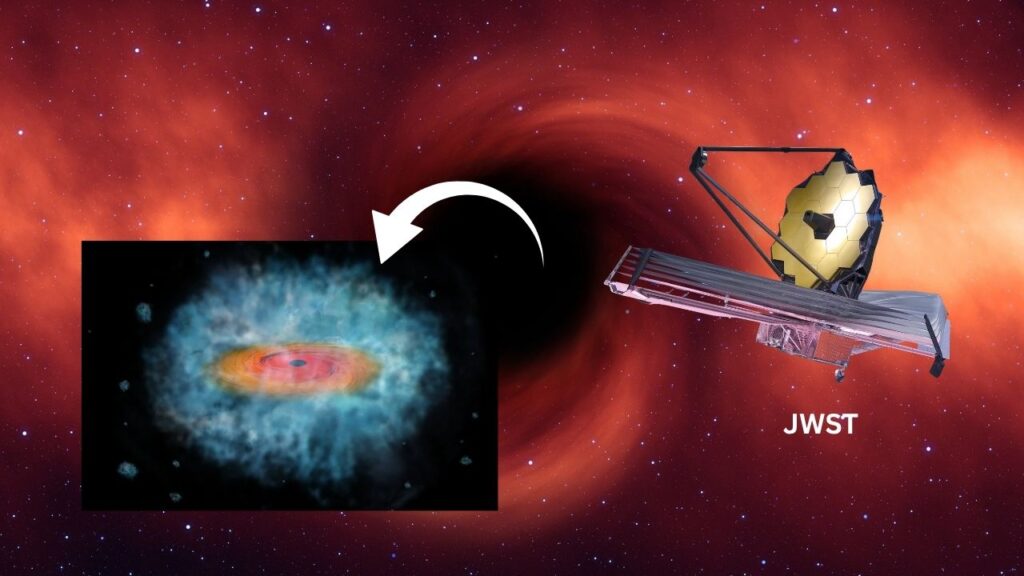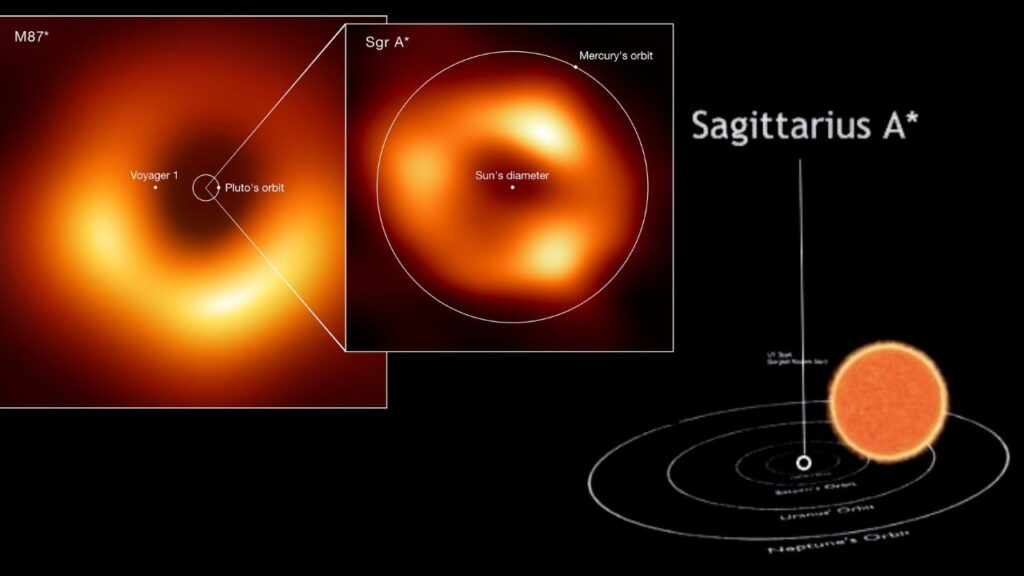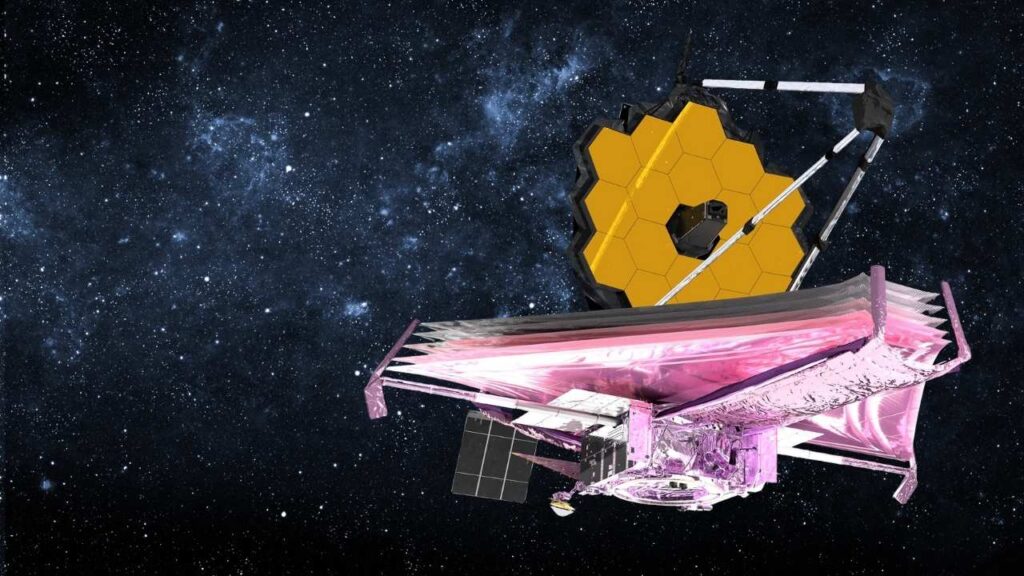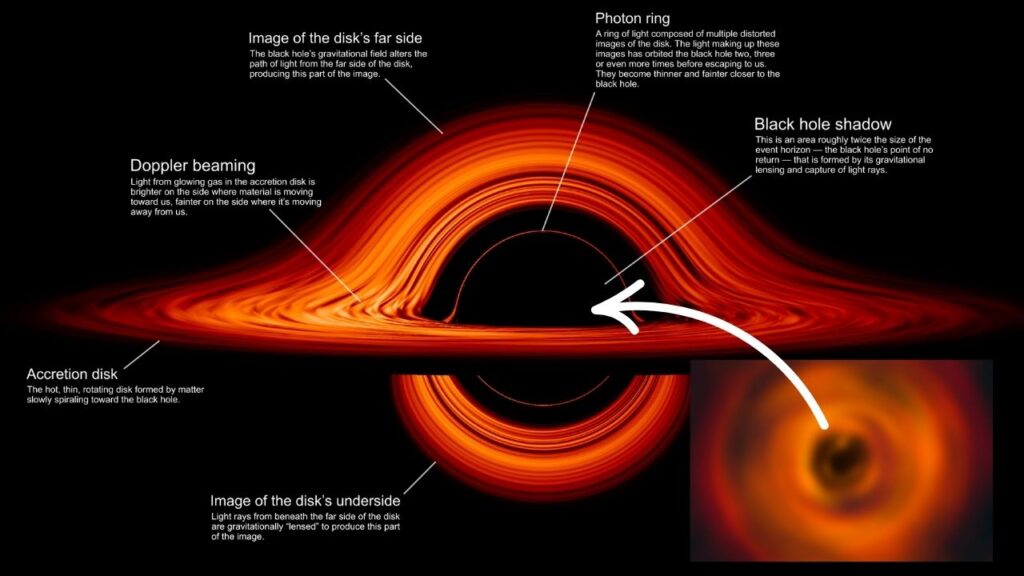Supermassive Black Holes Formed Directly?: Imagine you’re in a dark room, and you’re trying to find out how a huge, mysterious object got there—but you can’t see it directly, and it’s been there longer than you can remember. That’s a little like what scientists are trying to do with supermassive black holes at the centers of galaxies. These cosmic giants are so enormous—sometimes billions of times heavier than our Sun—that their very existence is a puzzle. The James Webb Space Telescope (JWST) is now helping us solve this mystery, and its discoveries are changing how we think about the early universe.

The biggest question is: How did these supermassive black holes grow so quickly after the Big Bang? Old theories suggested they started small, but new findings from JWST show that some black holes were already enormous when the universe was less than a billion years old. This has led scientists to wonder if these black holes formed directly from huge gas clouds, skipping the star stage entirely.
Supermassive Black Holes Formed Directly?
| Key Topic | Key Data/Statistic | Career/Professional Insight |
|---|---|---|
| Supermassive Black Hole Seeds | Formed less than 750 million years after Big Bang | Early universe growth challenges current models |
| Direct Collapse Scenario | Black hole seeds of 100,000–10 million solar masses possible via direct collapse | Requires gas at ~10,000 K to avoid star formation |
| JWST Discoveries | 70% of LRDs show signs of supermassive black holes at high redshift | JWST offers unprecedented sensitivity and resolution |
| AGN Detection | Highly ionized neon gas in M83 suggests hidden supermassive black hole | JWST can peer through dust to find hidden AGNs |
The James Webb Space Telescope is revolutionizing our understanding of the early universe and the origins of supermassive black holes. Its discoveries are challenging old theories and opening up new possibilities, like the direct collapse scenario. While the mystery isn’t completely solved yet, JWST is giving us the best clues yet about how these cosmic giants came to be.
What Are Supermassive Black Holes?
Supermassive black holes are the most massive black holes in the universe. They sit at the centers of galaxies, including our own Milky Way, which has a supermassive black hole called Sagittarius A*.

These giants are not just bigger than star-sized black holes—they are millions or even billions of times more massive. Scientists want to know how they got so big, so fast.
Why Is Their Origin a Mystery?
The main problem is time. According to the old idea, black holes start when massive stars collapse at the end of their lives. These star-sized black holes then grow by eating gas, dust, and other stars. But JWST has found supermassive black holes that are already billions of times the mass of the Sun when the universe was less than a billion years old. That’s not enough time for them to grow by the old rules.
How Could Supermassive Black Holes Form Directly?
Scientists have come up with a new idea called the direct collapse scenario. In this model, huge clouds of gas in the early universe collapse straight into a black hole, skipping the star stage. For this to happen, the gas must stay very hot—about 10,000 Kelvin—so it doesn’t break up into stars. If conditions are just right, the gas cloud collapses into a black hole seed that’s already 100,000 to 10 million times the mass of the Sun. This gives the black hole a huge head start, allowing it to grow into a monster in just a few hundred million years.
What Is the James Webb Space Telescope?
The James Webb Space Telescope is the most powerful space telescope ever built. Launched in 2021, it orbits the Sun about 1.5 million kilometers from Earth. Its huge mirror and sensitive instruments let it see the faintest, most distant objects in the universe, including the first galaxies and black holes that formed after the Big Bang.

JWST’s superpower is its ability to see in infrared light, which lets it peer through cosmic dust and look back in time over 13.5 billion years. This makes it perfect for studying the early universe and the birth of supermassive black holes.
What Has JWST Discovered So Far?
JWST has already made some amazing discoveries:
- Early Black Holes: JWST has found supermassive black holes in galaxies that formed less than 750 million years after the Big Bang. Some of these black holes are already billions of times the mass of the Sun—way too big to have grown from star-sized seeds in that time.
- Obscured Growth: JWST has identified a new class of galaxies called LRDs (Luminous Red Disks). About 70% of these galaxies show signs of supermassive black holes that are actively growing—meaning they are eating up gas and dust at a furious rate.
- Hidden Black Holes: JWST’s infrared vision has even found evidence of hidden supermassive black holes in nearby galaxies, like Messier 83, where previous telescopes couldn’t see through the dust.
How Does JWST Spot Black Holes?
JWST looks for special clues that reveal the presence of black holes:
- Fast-Moving Gas: When a black hole is feeding, it creates a swirling disk of gas around it. This gas moves incredibly fast—up to 2 million miles per hour (1,000 kilometers per second). JWST can detect this fast-moving gas using spectroscopy.
- Highly Ionized Gas: Black holes also heat up the gas around them, causing it to glow in specific colors. JWST can see this glowing gas, even if it’s hidden behind dust.
- Redshift: JWST measures how much the light from distant galaxies has been stretched (redshifted) by the expansion of the universe. This helps astronomers figure out how old the galaxies and their black holes are.

What Are the Next Steps for JWST?
JWST is just getting started. Astronomers are planning to:
- Study More Galaxies: JWST will observe more distant galaxies to find even earlier black holes and measure their masses and growth rates.
- Look for Direct Collapse Signs: Scientists will search for the unique light signatures that would be produced if a black hole forms directly from a collapsing gas cloud.
- Confirm Hidden Black Holes: Follow-up observations with other telescopes will help confirm the presence of black holes in galaxies like M83.
Practical Advice for Aspiring Astronomers
If you’re interested in black holes and the early universe, here are some tips:
- Follow JWST News: Keep an eye on the latest discoveries from the James Webb Space Telescope.
- Learn About Spectroscopy: Understanding how light is used to study distant objects is key to modern astronomy.
- Join Astronomy Clubs: Connect with other space enthusiasts and professionals to learn more and get involved in citizen science projects.
Innovative Drill Technology May Offer a Sustainable Energy Solution
MIT Introduces New 3D Chip Design for Improved Speed and Power Efficiency
Quantum Research Leads to Secure Generation of Random Numbers
FAQs About Supermassive Black Holes Formed Directly?
Q: How can JWST see black holes if they are invisible?
A: JWST doesn’t see the black hole itself, but it can detect the effects of black holes, like fast-moving gas and glowing, ionized gas around them.
Q: Why is it important to know how supermassive black holes formed?
A: Understanding how supermassive black holes formed helps us learn about the early universe, galaxy formation, and the laws of physics under extreme conditions.
Q: Can JWST prove that black holes formed directly from gas clouds?
A: JWST can provide strong evidence by finding the unique signatures of direct collapse, but it may take more observations and research to be certain.
Q: What is an AGN?
A: An AGN (Active Galactic Nucleus) is a supermassive black hole at the center of a galaxy that is actively feeding and producing huge amounts of energy.






